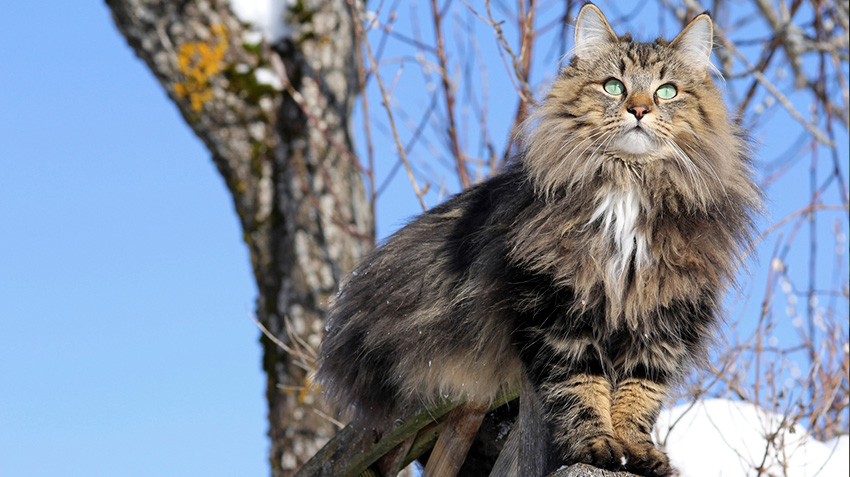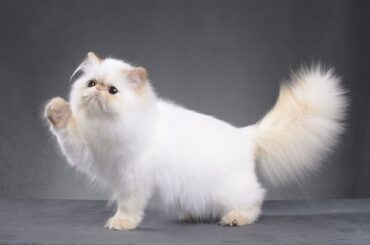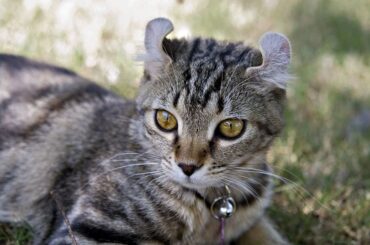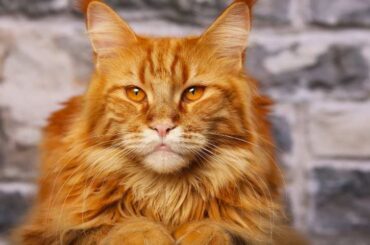The Norwegian Forest cat also known as the Norsk skogkatt is a domestic cat breed that originated in Northern Europe. The Norwegian Forest cat has evolved to withstand the harsh winters of Norway. Cold-adapted black and white British shorthair cats transported to Norway from Great Britain by the Vikings sometime after 1000 AD, and longhaired cats introduced to Norway by Crusaders c.14th century are possible ancestors.
These cats could have been bred with farm and feral stock, eventually resulting in the modern-day Norwegian Forest breed. Longhaired cats from Russia and Turkey, the Siberian and Turkish Angora, are other likely forebears of the breed.
The Norwegian Forest cat was nearly extinct during World War II, but the Norwegian Forest Cat Club’s breeding effort helped to increase the cat’s numbers. It was recognized as a breed by the European Fédération Internationale Féline in the 1970s after a cat enthusiast named Carl-Fredrik Nordane saw the breed and tried to register it. Norway, Denmark, Sweden, Iceland, and France are all big fans of the breed.

The Norwegian Forest Cat Club, the first organization dedicated to the species, was founded in Oslo, Norway, in 1938. World War II put a stop to the club’s efforts to save the breed. During the conflict, due to cross-breeding with free-roaming domestic cats. They were made the official cat of Norway by King Olav V in the 1950s.
In 1980, the Norwegian Forest Cats, as they are lovingly known, arrived in the United States. In 1984, the Norwegian Forest Cat was accepted for championship competition by TICA, the first organization to recognize the breed. In 1993, the breed was awarded CFA championship status.
Table of Contents
Body Characteristics
- The Norwegian forest cat is a large, athletic cat with a muscular body. The head is long, with an equilateral triangle-like general shape, a prominent chin, and a medium-length nose.
- The eyes of Norwegian forest cats are almond-shaped and oblique, and they can be any color. The ears are broad, wide at the base, and high set, with a tufted tip and a tuft of hair at the end.
- They are located in the extension of the triangle produced by the skull.
- The breed is distinguished by its large, strong body, powerful legs, and bushy tail.
- The coat is thickest around the legs, chest, and head, and is made up of a long, thick, glossy, water-repellent top layer and a fuzzy undercoat.

- The undercoat takes the form of a ruff. The breed’s profile is normally straight. Their thick undercoat and water-resistant hair evolved to help the cat live in the harsh Scandinavian climate.
- Adult females weigh 3.6–8 kg, while males weigh 4.5–9 kg and are 9–12 inches tall.
- The coat of the Norwegian forest cat is available in a variety of hues and patterns. White, black, blue, red, cream, silver, and golden are some of the coat hues. Solid, bicolor, tortoiseshell, calico, and tabby fur patterns can be found on this fluffy cat’s coat.
Behavior
These cats are attentive and intelligent, and they enjoy human interaction and affection. They’re undemanding and prefer to let you come to them, despite their want for attention. The Norwegian forest cat has a very family-oriented attitude. They’re kind, playful, and accepting of their environment. This gregarious breed enjoys cuddling and wants to make friends with everyone. They are outgoing, intelligent, and generally pleasant to be around. The Norwegian Forest cat is a high-energy animal. They are very social cats who appreciate being a part of their family and enjoy playing games.
Caring

Norwegian forest cats require a lot of grooming due to their long water-shedding coats and deep undercoats. Brush him at least twice a week, though, during periods of significant sheddings, such as the spring and fall, you’ll need to brush him even more. This is a slow-maturing breed that reaches full maturity at around five years of age. If you don’t want to have a close, intimate, and frequent relationship with your local groomer, daily combing and brushing are required. Make sure your cat has enough space to run and play when it comes to exercise.
Health
Forest cats from Norway are often healthy pets. Hip dysplasia, patella luxation, cardiomyopathy, and Glycogen storage disease type IV are the most serious health concerns for Norwegian forest cats. The cats have a 14–16-year lifetime.
RECOMMENDED ARTICLES
- Nebelung Cat Breed- Characteristics, Behaviour And Caring
- Loss Of Balance In Cat – Causes, Symptoms And Treatment
- Napoleon Cat Breed- Characteristics, Caring And Health
- Botflies In Cats – Life Cycle, Symptoms And Treatment Plan




